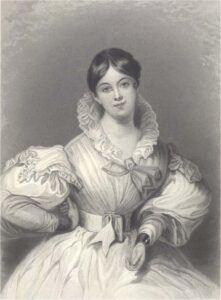 On this day 1838 poet and novelist, better known by her initials L.E.L., Letitia Elizabeth Landon died from an overdose of prussic acid in Cape Coast Castle on the Gold Coast of West Africa (now Ghana), aged 36. Born on 14 August 1802 in Chelsea, London.
On this day 1838 poet and novelist, better known by her initials L.E.L., Letitia Elizabeth Landon died from an overdose of prussic acid in Cape Coast Castle on the Gold Coast of West Africa (now Ghana), aged 36. Born on 14 August 1802 in Chelsea, London.
The writings of Landon are transitional between Romanticism and the Victorian Age. Her first major breakthrough came with The Improvisatrice and thence she developed the metrical romance towards the Victorian ideal of the Victorian monologue, casting her influence on Elizabeth Barrett Browning, Robert Browning and Christina Rossetti. Her influence can also be found in Alfred Tennyson and in America, where she was very popular. Poe regarded her genius as self-evident.
In spite of these wide influences, due to the perceived immorality of Landon’s lifestyle, her works were more or less deliberately suppressed and misrepresented after her death.
In October 1836, Landon met George Maclean, governor of the Gold Coast (now Ghana), at a dinner party, and the two began a relationship. Maclean, however, moved to Scotland early the following year, to the surprise and distress of Landon. After much prodding, Maclean returned to England and he and Landon were married shortly thereafter, on 7 June 1838. In early July, the couple sailed for Cape Coast, where they arrived on 16 August. Maclean was hot-tempered, and Landon’s married life was unhappy.
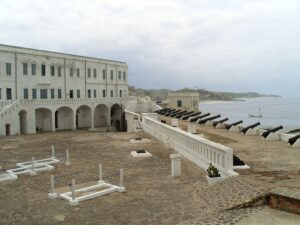 The Final Footprint – Landon was found dead, a bottle of prussic acid in her hand. This was a prescription labelled ‘Acid Hydrocianicum Delatum, Pharm. London 1836. Medium Dose Five Minims, being about one third the strength of that in former use, prepared by Scheele’s proof’. That she was poisoned thereby was an assumption. There is evidence that she showed symptoms of Stokes–Adams syndrome (for one, Mrs Elwood writes that she was subject to spasms, hysterical affections, and deep and instantaneous fainting fits) for which the dilute acid was the standard remedy and, as she told her husband it was so necessary for the preservation of her life, it would appear she had been told that her life was in danger. William Cobbald, the surgeon who attended, reported that ‘she was insensible with the pupils of both eyes much dilated’, an almost certain indication that a seizure had occurred. No autopsy was carried out (there being no qualified pathologist available) but from the eye-witness accounts it has been argued that Landon suffered a fatal convulsion. On the evening of her death she was buried in the courtyard of Cape Coast Castle.
The Final Footprint – Landon was found dead, a bottle of prussic acid in her hand. This was a prescription labelled ‘Acid Hydrocianicum Delatum, Pharm. London 1836. Medium Dose Five Minims, being about one third the strength of that in former use, prepared by Scheele’s proof’. That she was poisoned thereby was an assumption. There is evidence that she showed symptoms of Stokes–Adams syndrome (for one, Mrs Elwood writes that she was subject to spasms, hysterical affections, and deep and instantaneous fainting fits) for which the dilute acid was the standard remedy and, as she told her husband it was so necessary for the preservation of her life, it would appear she had been told that her life was in danger. William Cobbald, the surgeon who attended, reported that ‘she was insensible with the pupils of both eyes much dilated’, an almost certain indication that a seizure had occurred. No autopsy was carried out (there being no qualified pathologist available) but from the eye-witness accounts it has been argued that Landon suffered a fatal convulsion. On the evening of her death she was buried in the courtyard of Cape Coast Castle.
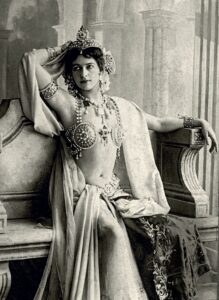 On this day in 1917, exotic dancer and courtesan Mata Hari died by firing squad after being convicted of being a spy for Germany in World War I, Vincennes, Paris, at the age of 41. Born Margaretha Geertruida Zelle on 7 August 1876 in Leeuwarden, Netherlands.
On this day in 1917, exotic dancer and courtesan Mata Hari died by firing squad after being convicted of being a spy for Germany in World War I, Vincennes, Paris, at the age of 41. Born Margaretha Geertruida Zelle on 7 August 1876 in Leeuwarden, Netherlands.
She defiantly blew a kiss to the firing squad. Zelle has often been portrayed as a femme fatale, the dangerous, seductive woman who uses her sexuality to effortlessly manipulate men, but others view her differently: in the words of the American historians Norman Polmer and Thomas Allen she was “naïve and easily duped”, a victim of men rather than a victimizer.
At 18, Zelle answered an advertisement in a Dutch newspaper placed by Dutch Colonial Army Captain Rudolf MacLeod (1 March 1856 – 9 January 1928), who was living in what was then the Dutch East Indies (now Indonesia) and was looking for a wife. Zelle married MacLeod in Amsterdam on 11 July 1895. The marriage enabled her to move into the Dutch upper class, and her finances were placed on a sound footing. They moved to Malang on the east side of the island of Java, traveling out on SS Prinses Amalia in May 1897, and had two children, Norman-John MacLeod (30 January 1897 – 27 June 1899) and Louise Jeanne MacLeod (2 May 1898 – 10 August 1919).
The marriage was an overall disappointment. MacLeod was an alcoholic and regularly beat his wife, who was twenty years younger and whom he blamed for his lack of promotion. He also openly kept a concubine, a socially accepted practice in the Dutch East Indies at that time. The disenchanted Zelle abandoned him temporarily, moving in with Van Rheedes, another Dutch officer. She studied the Indonesian traditions intensively for several months and joined a local dance company during that time. In correspondence to her relatives in the Netherlands in 1897, she revealed her artistic name of Mata Hari, the word for “sun” in the local Malay language (literally, “eye of the day”).
In 1903, Zelle moved to Paris, where she performed as a circus horse rider using the name Lady MacLeod, much to the disapproval of the Dutch MacLeods. Struggling to earn a living, she also posed as an artist’s model.
By 1905, Mata Hari began to win fame as an exotic dancer. She was a contemporary of dancers Isadora Duncan and Ruth St. Denis, leaders in the early modern dance movement, which around the turn of the 20th century looked to Asia and Egypt for artistic inspiration.
Promiscuous, flirtatious, and openly flaunting her body, Mata Hari captivated her audiences and was an overnight success from the debut of her act at the Musée Guimet on 13 March 1905. She became the long-time mistress of the millionaire Lyon industrialist Émile Étienne Guimet, who had founded the Musée. She posed as a Javanese princess of priestly Hindu birth, pretending to have been immersed in the art of sacred Indian dance since childhood. She was photographed numerous times during this period, nude or nearly so.
During World War I, the Netherlands remained neutral. As a Dutch subject, Zelle was thus able to cross national borders freely. To avoid the battlefields, she travelled between France and the Netherlands via Spain and Britain, and her movements inevitably attracted attention. During the war, Zelle was involved in what was described as a very intense romantic-sexual relationship with a Russian pilot serving with the French, the twenty-five year old Captain Vadim Maslov, whom she called the love of her life.
In the summer of 1916, Maslov was shot down and badly wounded during a dogfight with the Germans, losing his sight in both eyes, which led Zelle to ask for permission to visit her wounded lover at the hospital where he was staying near the front. As a citizen of a neutral country, Zelle would not normally be allowed near the front. Zelle was met by agents from the Deuxième Bureau who told her that she would only be allowed to see Maslov if she agreed to spy on Germany.
In January 1917, Major Kalle transmitted radio messages to Berlin describing the helpful activities of a German spy code-named H-21, whose biography so closely matched Zelle’s that it was patently obvious that Agent H-21 could only be Mata Hari. The Deuxième Bureau intercepted the messages and, from the information they contained, identified H-21 as Mata Hari. The messages were in a code that German intelligence knew had already been broken by the French, suggesting that the messages were contrived to have Zelle arrested by the French.
On 13 February 1917, Mata Hari was arrested in her room at the Hotel Elysée Palace on the Champs Elysées in Paris. She was put on trial on 24 July, accused of spying for Germany, and consequently causing the deaths of at least 50,000 soldiers. Although the French and British intelligence suspected her of spying for Germany, neither could produce definite evidence against her. Supposedly secret ink was found in her room, which was incriminating evidence in that period. She contended that it was part of her makeup.
A harlot? Yes, but a traitor, never!
— Phrase attributed to Mata Hari during the trial.
The Final Footprint
Mata Hari’s body was not claimed by any family members and was accordingly used for medical study. Her head was embalmed and kept in the Museum of Anatomy in Paris. In 2000, archivists discovered that it had disappeared, possibly as early as 1954, when the museum had been relocated. It remains missing. Records dated from 1918 show that the museum also received the rest of the body, but none of the remains could later be accounted for.
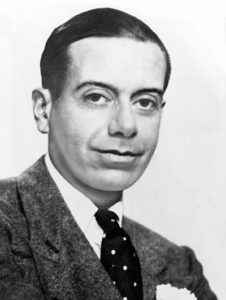 On this day in 1964 composer and songwriter Cole Porter died of kidney failure in Santa Monica, California at the age of 73. Born Cole Albert Porter on 9 June 1891 in Peru, Indiana. In my opinion, one of the greatest contributors to the Great American Songbook. He wrote both the lyrics and the music for his songs. My favorite Porter songs are: “Let’s do it, let’s Fall in Love”, “I Get a Kick out of You”, “You’re the Top”, “Don’t Fence Me In”, “It’s De-Lovely”, “I’ve got You under My Skin”, “You’d be so Nice to Come Home To”, “Too Darn Hot”. Porter met Linda Lee Thomas on 30 January 1918 at a wedding at the Hotel Ritz Paris. They were married on 18 December 1919 in Paris. They were married until her death in 1954.
On this day in 1964 composer and songwriter Cole Porter died of kidney failure in Santa Monica, California at the age of 73. Born Cole Albert Porter on 9 June 1891 in Peru, Indiana. In my opinion, one of the greatest contributors to the Great American Songbook. He wrote both the lyrics and the music for his songs. My favorite Porter songs are: “Let’s do it, let’s Fall in Love”, “I Get a Kick out of You”, “You’re the Top”, “Don’t Fence Me In”, “It’s De-Lovely”, “I’ve got You under My Skin”, “You’d be so Nice to Come Home To”, “Too Darn Hot”. Porter met Linda Lee Thomas on 30 January 1918 at a wedding at the Hotel Ritz Paris. They were married on 18 December 1919 in Paris. They were married until her death in 1954.
The Final Footprint – Porter is interred in the Porter Family Estate in Mount Hope Cemetery in Peru, Indiana between his wife and his father. His
grave is marked with an upright granite marker.
************************************************************************************
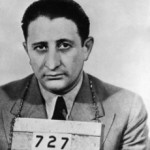 On this day in 1976 mafioso, boss of the Gambino crime family, Don Carlo, Capo di tutti capi (Boss of Bosses), The Godfather, Carlo Gambino died of a heart attack at his home (watching the New York Yankees) in Massapequa, New York at the age of 74. Born 24 August 1902 in Caccamo, Palermo, Sicily, Italy. In 1931, Charles “Lucky” Luciano created The Commission to avoid mafia warfare. The Five Families were formed at this time with Luciano head of the Luciano family, Joseph Bonnano head of the Bonnano family, Joseph Profaci head of the Profaci family, Gaetano Gagliano head of the Gagliano family and Vincent Mangano head of the Mangano family. In the Mangano family, Albert Anastasia served as underboss and Gambino served as caporegime. On 19 April 1951 Mangano’s brother was found murdered and Mangano vanished and was never found. Anastasia became boss of the Mangano family with Gambino as his underboss. Anastasia was murdered on 25 October 1957 and Gambino became head of the Mangano family which was then renamed the Gambino family. He would later become head of the Commission and thus the Boss of Bosses.
On this day in 1976 mafioso, boss of the Gambino crime family, Don Carlo, Capo di tutti capi (Boss of Bosses), The Godfather, Carlo Gambino died of a heart attack at his home (watching the New York Yankees) in Massapequa, New York at the age of 74. Born 24 August 1902 in Caccamo, Palermo, Sicily, Italy. In 1931, Charles “Lucky” Luciano created The Commission to avoid mafia warfare. The Five Families were formed at this time with Luciano head of the Luciano family, Joseph Bonnano head of the Bonnano family, Joseph Profaci head of the Profaci family, Gaetano Gagliano head of the Gagliano family and Vincent Mangano head of the Mangano family. In the Mangano family, Albert Anastasia served as underboss and Gambino served as caporegime. On 19 April 1951 Mangano’s brother was found murdered and Mangano vanished and was never found. Anastasia became boss of the Mangano family with Gambino as his underboss. Anastasia was murdered on 25 October 1957 and Gambino became head of the Mangano family which was then renamed the Gambino family. He would later become head of the Commission and thus the Boss of Bosses.
Gambino is entombed in the Gambino private room in the mausoleum at Saint John Cemetery in Middle Village, New York.
Have you planned yours yet?
Follow TFF on twitter @RIPTFF

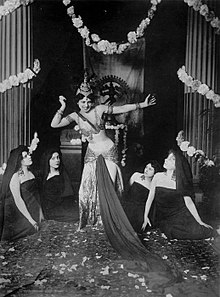

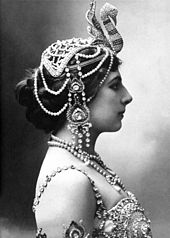




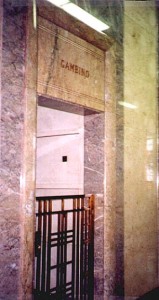

Pingback: This To Cling To » TeaWithTater.com